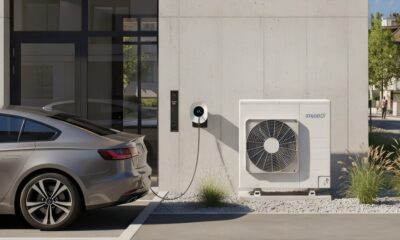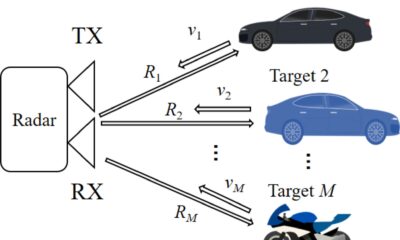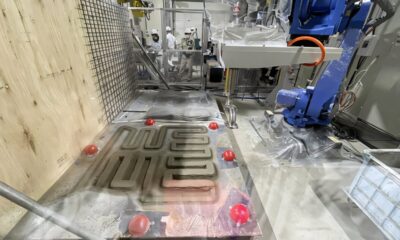Tech
Compact camera uses 25 color channels for high-speed, high-definition hyperspectral video
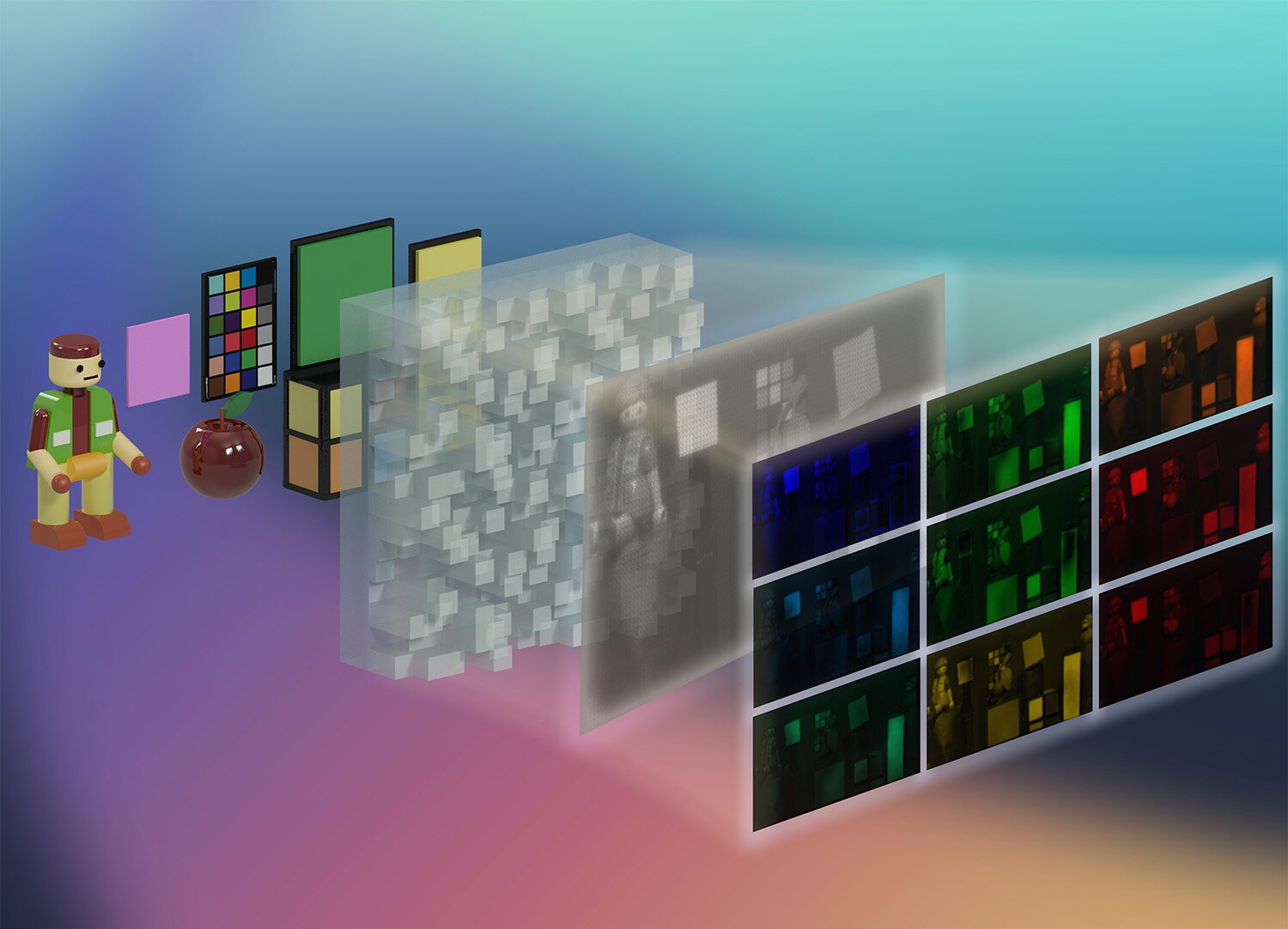
A traditional digital camera splits an image into three channels—red, green and blue—mirroring how the human eye perceives color. But those are just three discrete points along a continuous spectrum of wavelengths. Specialized “spectral” cameras go further by sequentially capturing dozens, or even hundreds, of these divisions across the spectrum.
This process is slow, however, meaning that hyperspectral cameras can only take still images, or videos with very low frame rates, or frames per second (fps). But what if a high-fps video camera could capture dozens of wavelengths at once, revealing details invisible to the naked eye?
Now, researchers at the University of Utah’s John and Marcia Price College of Engineering have developed a new way of taking a high-definition snapshot that encodes spectral data into images, much like a traditional camera encodes color. Instead of a filter that divides light into three color channels, their specialized filter divides it into 25. Each pixel stores compressed spectral information along with its spatial information, which computer algorithms can later reconstruct into a “cube” of 25 separate images—each representing a distinct slice of the visible spectrum.
This instantaneous encoding enables the researchers’ camera system—small enough to fit into a cellphone—to take high-definition video, and the compressed nature of the component images opens up new real-world applications.
A study demonstrating the camera was led by Research Assistant Professor Apratim Majumder and Professor Rajesh Menon, both in the Department of Electrical & Computer Engineering. The results are reported in the journal Optica.
The camera’s design represents a leap forward in how spectral data can be captured.
“We introduce a compact camera that captures both color and fine spectral details in a single snapshot, producing a ‘spectral fingerprint’ for every pixel,” Menon said.
Hyperspectral cameras have long been used in agriculture, astronomy and medicine, where subtle differences in color can make a big difference. But these cameras have historically been bulky, expensive and limited to still images.
“When we started out on this research, our intention was to demonstrate a compact, fast, megapixel resolution hyperspectral camera, able to record highly compressed spatial-spectral information from scenes at video-rates, which did not exist,” Majumder said.
The Utah team’s breakthrough lies in how it captures and processes the data. The key component is a diffractive element that is placed directly over the camera’s sensor. It’s the element’s repeating nanoscale patterns that diffract incoming light and encodes both spatial and spectral information for each pixel on the sensor. By encoding the scene into a single, compact two-dimensional image rather than a massive three-dimensional data cube, the camera makes hyperspectral imaging faster and more efficient.
“One of the primary advantages of our camera is its ability to capture the spatial-spectral information in a highly compressed two-dimensional image instead of a three-dimensional data cube and use sophisticated computer algorithms to extract the full data cube at a later point,” Majumder explained. “This allows for fast, highly compressed data capture.”
The streamlined approach also cuts costs dramatically.
“Our camera costs many times less, is very compact and captures data much faster than most available commercial hyperspectral cameras,” Majumder said. “We have also shown the ability to post-process the data as per the need of the application and implement different classifiers suited to different fields such as agriculture, astronomy and bio-imaging.”
Data storage is another advantage.
“Satellites would have trouble beaming down full image cubes, but since we extract the cubes in post-processing, the original files are much smaller,” Majumder added.
To demonstrate the camera’s capabilities, the researchers tried three real-world applications: telling different types of tissue apart in a surgical scene; predicting the age of strawberries as they decayed over time; and mimicking a series of spectral filters that are used in astronomy.
The current prototype takes images at just over one megapixel in size and can break them down into 25 separate wavelengths across the spectrum. But the team is already working on improvements.
“This work demonstrates a first snapshot megapixel hyperspectral camera,” Majumder said. “Next, we are developing a more improved version of the camera that will allow us to capture images at a larger image size and increased number of wavelength channels, while also making the nano-structured diffractive element much simpler in design.”
By making hyperspectral imaging cheaper, faster, and more compact, the U engineers have opened the door for technologies that could change the way we see the world and uncover details hidden across the spectrum.
More information:
Apratim Majumder et al, High-definition (HD) snapshot diffractive computational spectral imaging and inferencing, Optica (2025). DOI: 10.1364/optica.559279
Citation:
Compact camera uses 25 color channels for high-speed, high-definition hyperspectral video (2025, September 25)
retrieved 25 September 2025
from https://techxplore.com/news/2025-09-compact-camera-channels-high-definition.html
This document is subject to copyright. Apart from any fair dealing for the purpose of private study or research, no
part may be reproduced without the written permission. The content is provided for information purposes only.
Tech
How electric cars and heat pumps can help Switzerland implement its energy strategy
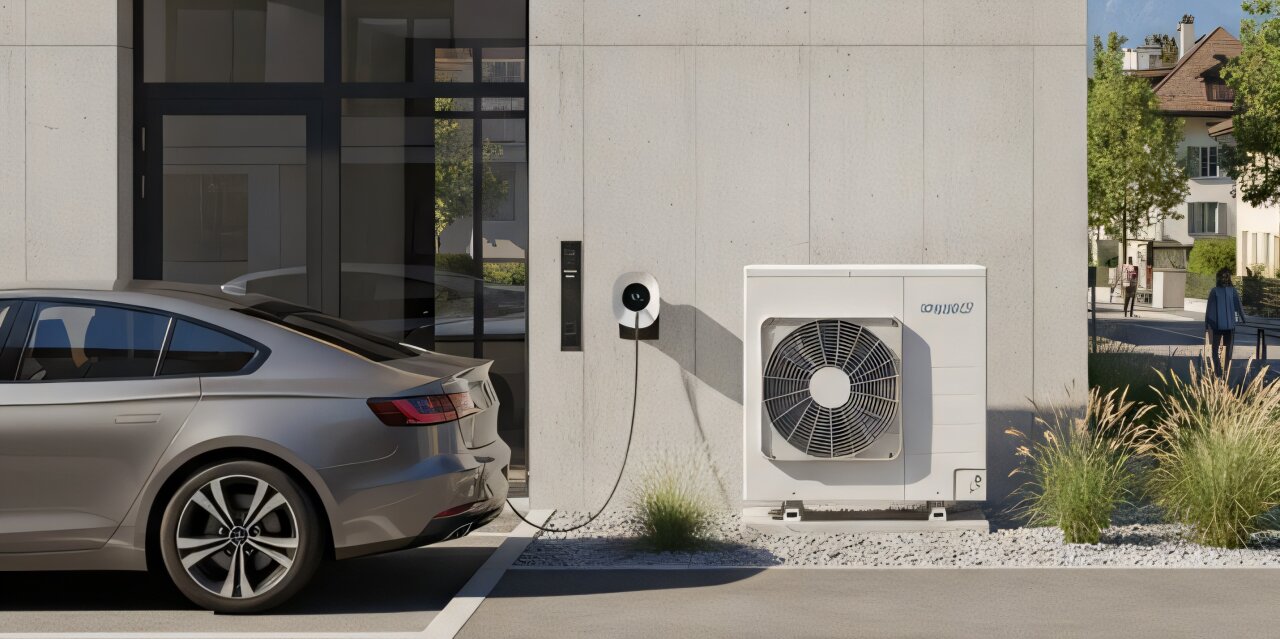
In the future, flexibly operated heat pumps and electric cars could reduce both electricity imports and electricity prices. That is according to a new study by a Swiss research consortium led by ETH Zurich.
Electric cars and heat pumps could play a major role when it comes to implementing the Swiss Energy Strategy. The Federal Council is aiming for Switzerland’s energy supply to be carbon-neutral by 2050. The plan is for heat pumps to replace oil and gas-fired heating systems and for electric cars to gradually replace combustion vehicles. This will result in a significant increase in demand for electricity—from around 56 terawatt-hours (TWh) a year today to around 75 TWh a year by 2050.
A new report by the Swiss “PATHFNDR” research consortium, which is part of the “SWEET” program, has now shown that, alongside hydropower, heat pumps and electric cars could be key providers of flexibility for the Swiss power system in 2050.
Christian Schaffner, Director of the Energy Science Center at ETH Zurich and Deputy Director of the project, explains, “The two technologies serve to better coordinate rising electricity consumption with electricity production from renewable energy sources. This relieves the burden on the power grid, reduces imports and brings down wholesale electricity prices—particularly in the winter months.”
Only consume if the grid is not at full capacity
This flexibility is apparent on an everyday basis. For example, at outdoor temperatures of 0°C, intelligently controlled heat pumps can switch off for up to 10 hours in buildings meeting the Minergie standard without a noticeable drop in room temperature. This helps to avoid having too many heat pumps running at the same time and overloading the grid.
Electric cars, too, are often connected to the grid for much longer than is necessary for a full charge—for example if they are plugged in to charge in the garage at the end of the working day. This allows for an optimum charging pattern that is in line with electricity supply. The study claims that the best thing would be to charge the car at work: “During the day, when the sun is shining, many vehicles are parked anyway. Charging them there would make optimum use of photovoltaic production,” explains Siobhan Powell, an energy researcher at ETH Zurich and one of the main authors of the study.
More electricity, less electricity imports
By 2050, Switzerland wants to cover 50 to 60% of its electricity demand (45 TWh per year) with new renewable energy sources such as photovoltaics, wind energy or biomass. The researchers’ model calculations now show that this target will be easier to reach thanks to the flexible power consumption of heat pumps and electric vehicles.
If heat pumps and electric cars are coordinated and controlled flexibly on a nationwide basis, around 4% more renewable electricity could be available in Switzerland in 2050. “Most of this is solar power in spring and summer, which would be utilized more efficiently so that it does not need to be curtailed,” explains Powell.
Moreover, flexible heat pumps and electric cars could reduce net electricity imports by around 20% across the whole year, particularly due to higher net exports in spring and summer. “These amount to some 1.8 TWh of electricity, which is equivalent to the annual consumption of around 0.5 million Swiss households,” says Powell. According to the study, Switzerland’s electricity imports would also be reduced by around 0.7 TWh in the winter months. That corresponds to a 4.4% reduction in net imports in winter compared to an energy system without flexibly operated heat pumps and electric cars.
Cheaper electricity and fewer gas power stations
In addition, the study shows that wholesale electricity prices could also be lower due to a more even distribution of supply and demand with the help of flexible heat pumps and electric cars. This reduction in electricity prices is greatest in the winter months of January to March, when wholesale prices could be reduced by up to 6%.
The researchers also estimate that an electricity system supported by flexible heat pumps and electric cars could be operated with around 4% lower costs than a system without these two flexibility providers.
Moreover, the use of flexibly operated heat pumps and electric cars would also mean the construction of fewer gas power stations and battery storage systems by 2050. Estimates show that the necessary investment in gas power stations and batteries would fall by around a third. “Above all, gas power stations and batteries are necessary to compensate for peaks in electricity demand. If electric vehicles and heat pumps take over this function, we’ll need fewer of them,” explains Powell.
Flexibility yes, but also convenience
According to a representative survey carried out as part of the study, about 70% of the Swiss population is willing to contribute to grid stability through flexible heating and charging, provided their convenience is not impacted and operation is automatic. About 30% of respondents even said they would accept minor inconveniences if this would bring down their electricity costs.
Lower peak loads in neighborhoods and reduced grid expansion
If a large number of households are charging their cars or running their heat pumps at the same time, there is a risk of bottlenecks in the distribution grid. Many of today’s power cables and transformers are not designed for these loads and would need to be reinforced.
The researchers analyzed about 50 grid areas in Switzerland and concluded that flexibly operated heat pumps and electric cars would reduce peak loads in neighborhoods and could therefore delay and reduce the need for expensive reinforcement work on distribution grids. The actual size of these effects also depends on whether the areas in question are urban or rural.
Electricity tariffs that reward citizens
So that electrical vehicles and heat pumps can actually act as flexibility providers by 2050, they must be equipped with the necessary control and communication technology. At present, this is not the case across the board. The authors of the study therefore recommend that further systems only be subsidized if they allow flexible and intelligent operation.
In addition, the operators of electric vehicles and heat pumps should be incentivized to change their heating and charging behavior. To this end, the study recommends measures including dynamic electricity tariffs that reward flexible charging and heating. However, significant local differences in tariffs and feed-in payments would hinder this measure’s implementation in Switzerland, states the study.
The researchers also point out that the promotional instruments in Switzerland are very heterogeneous and that there is, as yet, no national “right to charge” for tenants with electric vehicles—something they say ought to be resolved quickly.
More information:
Flexibility provision from electromobility and buildings – Synthesis Report (2025). DOI: 10.3929/ethz-c-000787060
Citation:
How electric cars and heat pumps can help Switzerland implement its energy strategy (2025, November 11)
retrieved 11 November 2025
from https://techxplore.com/news/2025-11-electric-cars-switzerland-energy-strategy.html
This document is subject to copyright. Apart from any fair dealing for the purpose of private study or research, no
part may be reproduced without the written permission. The content is provided for information purposes only.
Tech
New algorithm enhances Doppler resolution of unmanned vehicle radars

A research team has developed an extrapolation-based Doppler resolution enhancement algorithm for frequency modulated continuous wave radars. The algorithm improves system performance, offering an advancement that is superior to existing ultra-high-resolution technologies.
The findings are published in the Journal of Electrical Engineering & Technology. The team was led by Sang-dong Kim and Bong-seok Kim, affiliated with the DGIST Division of Mobility Technology, in collaboration with a team led by Professor Youngdoo Choi, affiliated with the Republic of Korea Naval Academy (ROKNA).
Improving radar accuracy without extra hardware
This research introduces a technology that improves radar detection accuracy without the need for additional complex computations or hardware. The technology is expected to contribute to enhancing radar system performance on various intelligent unmanned platforms such as unmanned aerial vehicles (UAVs), unmanned ships, and autonomous vehicles.
Conventional radar systems analyze the Doppler effect to determine the velocity of a target, but the fast Fourier transform (FFT)-based approach has limitations regarding resolution (i.e., the accuracy of velocity discrimination). To address this, the joint DGIST–ROKNA research team applied a signal extrapolation technique and has proposed a new algorithm that enhances Doppler resolution without extending observation time.
Performance gains and real-world applications
The proposed method successfully reduces the root mean square error of velocity estimation by up to 33% and decreases the target miss rate by up to 68%, representing a substantial improvement over the conventional approach. Notably, the proposed method maintains the same computational complexity level as the conventional FFT method, thereby simultaneously achieving fast processing speed and high efficiency.
This technology can effectively solve the problem of signal overlap between targets moving at similar velocities, particularly when UAVs or radar systems detect multiple objects simultaneously. It can therefore greatly enhance the ability to distinguish closely spaced targets and improve detection accuracy, marking a new milestone in the advancement of high-resolution target detection technology.
Additionally, the technology is highly regarded for its industrial applicability because it requires no additional hardware resources and features a simple computational structure that enables real-time implementation.
Sang-dong Kim, principal researcher at the Division of Mobility Technology (concurrently serving the interdisciplinary engineering major), said, “This study demonstrates an improvement in both the efficiency and precision of radar signal processing, enabling more accurate target detection without the need for additional equipment. It is expected to evolve into a key technology for defense, autonomous driving, and unmanned systems.”
More information:
Youngdoo Choi et al, Doppler Resolution Enhancement Algorithm Based on Extrapolation for FMCW Radar, Journal of Electrical Engineering & Technology (2025). DOI: 10.1007/s42835-025-02453-6
Citation:
New algorithm enhances Doppler resolution of unmanned vehicle radars (2025, November 11)
retrieved 11 November 2025
from https://techxplore.com/news/2025-11-algorithm-doppler-resolution-unmanned-vehicle.html
This document is subject to copyright. Apart from any fair dealing for the purpose of private study or research, no
part may be reproduced without the written permission. The content is provided for information purposes only.
Tech
Spray 3D concrete printing simulator boosts strength and design
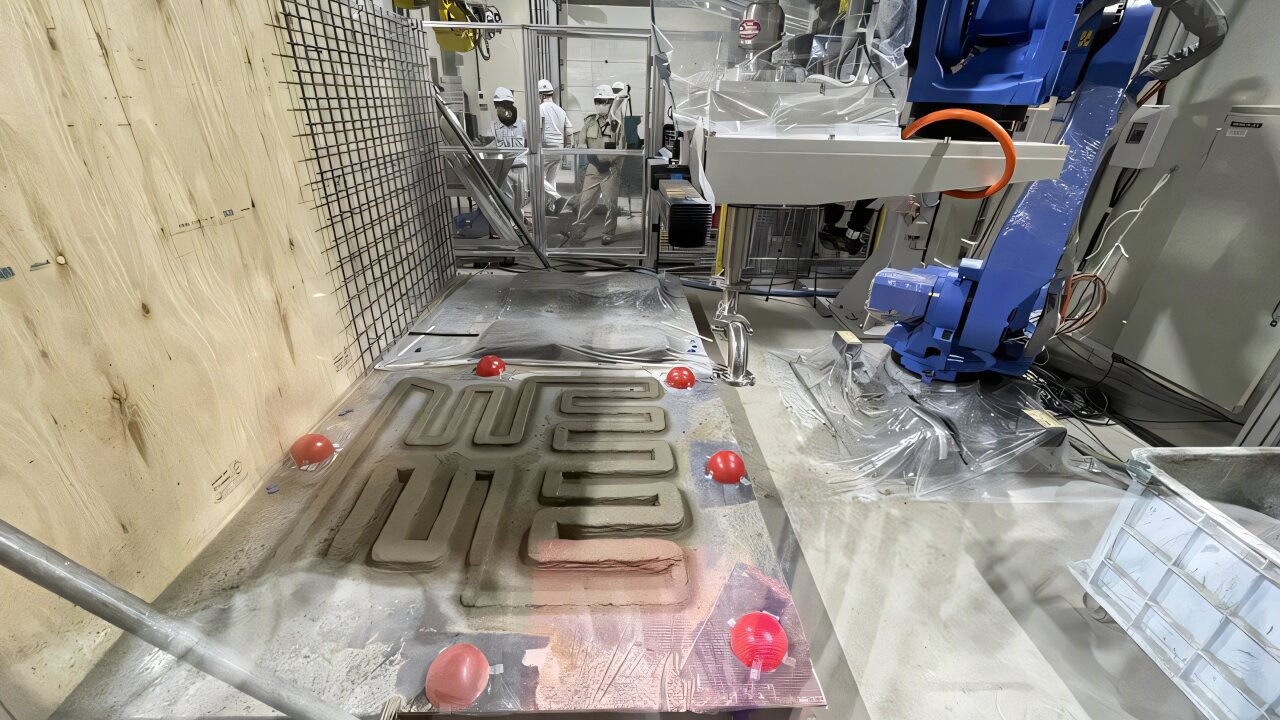
Concrete 3D printing reduces both time and cost by eliminating traditional formwork, the temporary mold for casting. Yet most of today’s systems rely on extrusion-based methods, which deposit material very close to a nozzle layer by layer. This makes it impossible to print around reinforcement bars (rebars) without risk of collision, limiting both design flexibility and structural integrity of builds.
Kenji Shimada and researchers in his Carnegie Mellon University’s Computational Engineering and Robotics Laboratory (CERLAB), are breaking through that limitation with a new simulation tool for spray-based concrete 3D printing.
“Spray-based concrete 3D printing is a new process with complicated physical phenomena,” said Shimada, a professor of mechanical engineering. “In this method, a modified shotcrete mixture is sprayed from a nozzle to build up on a surface, even around rebar.”
The ability to print freely around reinforcement is especially important in places like Japan and California, where earthquakes are an imminent threat and structural strength is critical.
“To make this technology viable, we must be able to predict exactly how the concrete will spray and dry into the final shape,” Shimada explained. “That’s why we developed a simulator for concrete spray 3D printing.”
The new simulator can model the viscoelastic behaviors of shotcrete mixtures, including drip, particle rebound, spread, and solidification time. This way, contractors can assess multiple printing paths based on a CAD design with the simulator to evaluate whether spray 3D printing is a feasible fabrication technique for their structure.
The team traveled to Tokyo, Japan, where Shimizu Corporation already operates spray 3D printing robots to validate their model. In the first test, the team focused on the simulator’s ability to predict shape based on the speed of the nozzle’s movement. With 90.75% accuracy, the simulator could predict the height of the sprayed concrete. The second test showed that the simulator could predict printing over rebar with 92.3% and 97.9% accuracy for width and thickness, respectively.
According to Soji Yamakawa, a research scientist in Shimada’s lab and the lead author of the team’s research paper published in IEEE Robotics and Automation Letters, a simulation of this kind would typically take hours, if not days, to run.
“By making wild assumptions, we were able to successfully simplify a super complex physics simulation into a combination of efficient algorithms and data structures and still achieved highly realistic output,” Yamakawa said.
Future work will aim to increase accuracy by identifying environmental parameters like humidity, optimizing performance, and adding plastering simulation to create smoother finished products.
“There are still so many applications and technologies that we can develop with robotics,” said Kyshalee Vazquez-Santiago, a co-author of the paper and a mechanical engineering Ph.D. candidate leading the Mobile Manipulators research group within CERLAB.
“Even in concrete 3D printing, we are working with an entirely new type of application and approach that has so many advantages but leaves so much room for further development.”
More information:
Soji Yamakawa et al, Concrete Spray 3D Printing Simulator for Nozzle Trajectory Planning, IEEE Robotics and Automation Letters (2025). DOI: 10.1109/lra.2025.3615038
Citation:
Spray 3D concrete printing simulator boosts strength and design (2025, November 11)
retrieved 11 November 2025
from https://techxplore.com/news/2025-11-spray-3d-concrete-simulator-boosts.html
This document is subject to copyright. Apart from any fair dealing for the purpose of private study or research, no
part may be reproduced without the written permission. The content is provided for information purposes only.
-

 Tech1 week ago
Tech1 week agoCISOs in court: Balancing cyber resilience and legal accountability | Computer Weekly
-

 Fashion1 week ago
Fashion1 week agoCoach reconnects with Bank & Vogue for upcycled bags using corduroy
-

 Tech1 week ago
Tech1 week agoThe Security Interviews: Colin Mahony, CEO, Recorded Future | Computer Weekly
-

 Fashion1 week ago
Fashion1 week agoGermany’s Adidas achieves highest-ever quarterly sales in Q3 2025
-

 Business1 week ago
Business1 week agoFirst new Amazon electric heavy goods vehicles hit UK roads
-

 Sports1 week ago
Sports1 week agoSources: QB Daniels dislocated elbow in loss
-

 Business1 week ago
Business1 week agoBusiness news live – Banks bet on interest rate cut and UK bills rise 8% in a year
-

 Tech1 week ago
Tech1 week agoTech Traveler’s Guide to Seattle: Where to Stay, Eat, and Recharge


